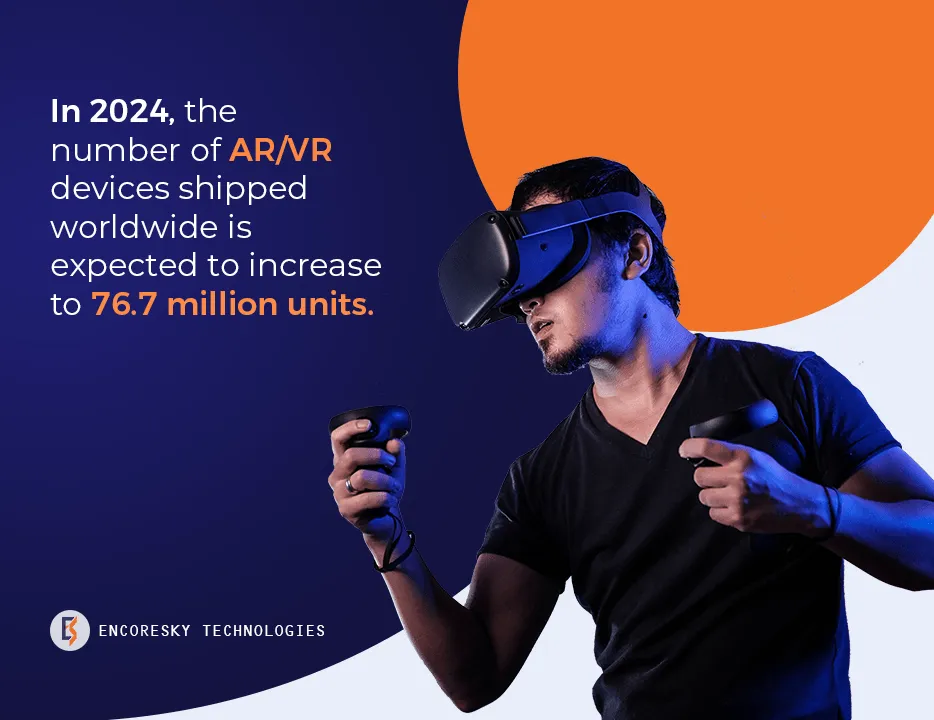What is extended reality?
Extended reality (XR) is a common term that refers to both real as well as virtual combined environments along with human-machine interactions which are commonly generated by wearables and computer technology.
The ‘X’ gives the representation of a variable for any future or current spatial different computing technologies. For instance, it also includes many representative forms like virtual reality (VR), augmented reality (AR) and mixed reality(MR). Amongst them, different areas are interpolated.
The different levels of a virtuality range from immersive virtuality to partially sensory inputs which are also regarded as VR.
What are some of the different types of XR extended reality?
Extended reality (XR) training is known for extending the reality of every learner via merging the real world with the help of various digital materials or completely stimulated environments.
Through a wide range of XR training activities, learners can easily practice different interactive as well as complex tasks with 3D objects from a risk-free and safe environment.
In 2024, the number of AR/VR devices shipped worldwide is expected to increase to 76.7 million units (Statista).

The three kinds of XR training are as follows:-
1. Augmented Reality (AR)
3D objects which are generated by computers are superimposed by AR onto a real-world environment. After placing, learners get an opportunity to complete their realistic interactions with the help of digital objects which would not only help in building technical skills but also knowledge about the product.
2. Virtual Reality (VR)
The most renowned XR training tool, VR does proper utilization of the environment which is made up of either 360° VR or full VR simulations. In such an environment, it provides a boost to the development of learners’ skills by encountering all real-life scenarios without the risk of facing real-world issues. The best example of Virtual reality can be Metaverse.
3. Mixed Reality (MR)
MR is regarded as the perfect combination of AR as well as VR. It blends both the digital and physical world with the help of applying advanced computer technology, input systems as well as graphics.
Learners can easily thrive in the real-life environment with MR learners while proper interaction with pictures, digital objects, people, videos and other more digitized elements.
What are the advantages of XR technologies?
As per Statista, the Global Market Size of XR Technology would reach close to 300 billion U.S. dollars by 2024
The term XR stands for “extended reality,” a kind of umbrella term that can cover VR, AR, and MR. All XR tech is popular for taking the human-to-PC screen interface after modifying it, either by immersing the users in the virtual environment (VR), serves as an addition to the surrounding of the users (AR) or both of them (MR).
The benefits of XR technology are as follows:-
1. Keeping both employees and equipment safe
With the adoption of extended realities, it becomes easy for many organizations to protect the interest of their employees and safeguard equipment by creating realistic virtual models of equipment that would take the probable risk out of training on real-life machinery.
2. Minimalizing on-the-job mistakes
An enriching learning environment is created by XR where employees get to know and learn from their mistakes and accordingly they apply their knowledge to the real world.
The process can be repeated multiple times by learners on complex machinery which would not only allow them to make mistakes but also assess and learn from them. All of these take place before starting the job.
3. Development of skills in a risk-free environment
Through XR training, the skills of every employee get developed in a risk-free as well as a learning environment that eliminates any kind of worry regarding causing damage to any equipment or injury to oneself or others.
4. Promotes long-term knowledge retention
The experiential learning which thrives in an XR environment, employees are given knowledge by consistent practice. Through numerous activities related to interactive learning with XR technology, learners can easily remember all the information for a long time after the training has been done.
What are some of the examples of XR technology for high-risk training scenarios?
Some examples are enumerated below:-
1. Preparation of food or retail service
The adoption of full VR technology could promote the recreation of a robbery scenario at your organization or any location of your store. It is highly suggested for foodservice as well as retail industries.
Since it allows VR learners to think from the perspective of the first person of every scenario where the navigation of the situation would be made by making crucial decisions that might affect the behaviour of the robber.
2. Training different learners to operate and repair complex equipment
There are detailed 3D models of many complex types of machinery, this offers organizations to adopt AR technology and create such models. A digital object could be simply anchored by learners via a smartphone device or a tablet on a flat surface and then marking the completion of realistic interactions with the object.
3. Stimulating delivery scenario of the last mile
This is very essential for employees of the supply chain. This is the last stage in the process of product delivery where last-mile delivery ensures the arrival of the product at the right time and in the right condition.
Learners are suggested to sit behind the wheel within a complete immersive driving experience. They are further instructed to complete the whole process as if it were real.
Does XR carry any kind of risk?
Every designer carries a responsibility regarding how their designs are showcased in the world and if people could easily engage with them. To assess this, the behaviour of all the people are accounted for who engage with the designs. The research is conducted to collect all the information about such people.
The information that has been used via following the iterative design procedure which facilitates the integration of the lives of individuals for whom the designing is done. The features are generally based on the information regarding the thought process of the person or like in a particular scenario in which a product would be used by them.
This gives the ability for using behavioural psychology for extending help to design immersive experiences. The amount of influence also carries a lot of unknown risks.
For instance, a person might be in a hurry to reach their destined place and start running while using the feature of Google AR map which might cause them to bump into any other person on the sidewalk since they failed to pay required attention which needed their focus.
The beauty along with the risk that is involved with XR technologies marks its existence in the immersion of different experiences which is primarily created for those who are using the technology.
Frequently Asked Questions (FAQs):-
Q1. What is an example of extended reality?
A: The term XR stands for “extended reality”, a common umbrella term that covers VR, AR and MR. Some of the examples are immersing many gamers in the required action by putting a smartphone display, a screen or a headset, which would be in front of the eyes (VR). Addition of many game characters to the real world like surroundings such as Pokemon Go (AR).
Q2. What are some shortfalls of extended reality?
A: The applications for longer-term VR devices as well as augmented reality glasses might lead to severe headaches, eye disorders, faintness and nausea. Both the implementation as well as the development of XR solutions along with devices provides support to the technology which is quite expensive and might cost a little higher.
Q3. What companies use extended reality?
A: Some of the versatile companies which use extended reality are Microsoft, ScienceSoft, VironIT, Niantic, Apple, Scanta, CitrusBits as well as 4Experience.
Q4. What can extended reality be used for?
A: Apart from educational purposes, XR technology is actively used in engineering, designing as well as architecture. Due to the wide areas of applications in virtual reality, it becomes easy for architects to create models of the projects in a 1:1 ratio, which could easily be explored, manipulated and tested before the commencement of the build.It can also be used for human-machine interface development (HMI), product designing and development, sales and marketing and training and, guidance.
Q5. What are XR devices?
A: The umbrella term, Extended Reality (XR) envisages AR, MR, VR which is Augmented Reality, Mixed Reality and Virtual Reality. Multiple types of revolutionary experiences are offered by both AR and VR and the remaining technologies power XR.
Conclusion
Extended Reality has recently emerged in the world of technology but understanding it is very convenient and simple. The XR is regarded as an umbrella term that is rolled in AR, VR and MR. In simpler terms, XR technology is a kind of tech which can make your display more attractive and eye-catching.
It facilitates easy interaction with your real work surroundings by making it more immersive. The impact of it on our future is significant. In the education sector, VR promotes broadening horizons in multiple ways.
AR maps are known for guiding users to the product which they are actively in search of.









